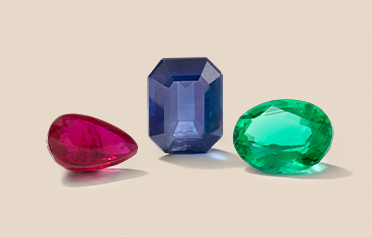What Is My Birthstone? A Comprehensive Guide to Gems
Birthstones can infuse any piece of jewelry with personalized beauty while celebrating those milestone moments. Traditionally associated with specific months of the year, these colorful gemstones carry unique attributes while offering a compelling aesthetic. Find your stone below to learn more about the meaning and properties of each gem. Then explore our offerings of birthstone jewelry, ranging from rings and earrings to bracelets and necklaces.

where did the idea of birthstones originate?
No one knows the origins of birthstones for certain, but biblical lore describes a breastplate embellished with a dozen gemstones that represented Israel’s 12 tribes. While that may be the earliest known connection, the modern association of gemstones paired with birthstones may have originated in Poland or Germany during the 16th century.
Whatever the case, birthstone jewelry can symbolize new life, celebrate a personality, heritage or special occasion, or simply provide a style aesthetic for the wearer who connects with the dazzling beauty of a specific gemstone.
Birthstones by month
From the fiery garnet stones of January to the deep blue sapphire of September, birthstones have become symbols of personal identity and connection. Here, we’ve included each month’s gemstone, along with its properties and its rating according to the Mohs Scale of Mineral Hardness. This scale rates gemstones in terms of scratch-resistance, and each gem receives a rating of 1 through 10 — 1 being the softest and 10 the hardest.

January birthstone meaning
Garnet stones are the earthy gems of January thought to ignite passion, joy and energy. Available in a variety of settings, these sultry, red-saturated gems look especially lovely when paired with diamonds or yellow gold.
Garnet properties
Garnets are known for their deep red hue, but they also come in a wide range of colors, including a rare blue. Rating 6.5 to 7.5 on the Mohs Scale, garnet gems are durable and timeless birthstones that add a dash of drama to any collection.
Shop january birthstones: garnet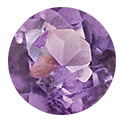
February birthstone meaning
Amethyst is an exquisite violet-purple or green gemstone believed to repel negativity and reduce stress and anxiety. The richly hued amethyst adds a regal appearance to pendant necklaces and rings.
Amethyst properties
A type of quartz, the amethyst stone is resilient and durable, which makes it ideal for long-lasting jewelry. With a 7 on the Mohs Scale, amethyst gems will last for years to come with proper care.
Shop february birthstones: amethyst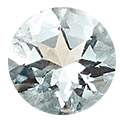
March birthstone meaning
The vivid blue-green gemstone reflects the depths of the ocean. Latin for “seawater,” aquamarine gemstones are thought to lift the spirit, renew vitality and energize the mind.
Aquamarine properties
Aquamarine gems are from the same family as emeralds and are found mainly in granite rocks. With a Mohs Scale rating of 7.5 to 8, this exquisite green-blue stone can last generations.
Shop march birthstones: aquamarine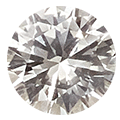
April birthstone meaning
The ultimate gemstone (but we're a little biased!), diamonds have been treasured for their unparalleled sparkle and power to impress. Traditionally, these scintillating stones symbolize purity and love, which is why they are often chosen for engagement rings. April's alternative birthstone is white sapphire, which offers a cost-effective, yet radiant, alternative for April birthdays.
Diamond properties
Choose from two types of diamonds — natural and lab grown. Formed deep within the Earth under immense pressure and heat, natural diamonds are prized for their rarity. Lab grown diamonds are created in a controlled environment, and they share the same chemical composition, physical properties and sparkle as their natural counterparts. Renowned for their exceptional fire and brilliance, all diamonds boast a Mohs hardness rating of 10, ensuring their durability in any jewelry setting.
Shop april birthstones: diamond
May birthstone meaning
The captivating emerald is known for its nearly otherworldly rich, green hue. Symbolizing love, prosperity and success, these precious stones are believed to possess the power to ward off negative energy and foster harmonious relationships.
Emerald properties
Emeralds owe their stunning green color to trace amounts of chromium and sometimes vanadium. With a Mohs hardness rating of 7.5 to 8, emeralds are relatively resistant to scratches. Their vibrant green hue creates a striking focal point in jewelry, whether set in sterling silver, white gold or yellow gold.
Shop may birthstones: emerald
June birthstone meaning
Pearls, a testament to nature's artistry, are formed within the delicate tissue of living mollusks. Prized for their beauty and rarity, pearls are also believed to possess healing properties for the heart. While pearls are the traditional birthstone for June, Alexandrite and pink sapphire offer alluring alternatives.
Pearl properties
A classic beauty, pearls come in four different varieties: Tahitian, South Sea, Akoya and freshwater. Pearls rank 2.5 on the Mohs Scale, meaning it is very soft and easily scratched. With care, however, pearl jewelry can be a lasting treasure.
Shop june birthstones: pearl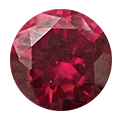
July birthstone meaning
With their intense, fiery hue, rubies are often associated with passion and desire. Revered as the “king of gemstones” in ancient India, these precious stones typically boast a deep pink or blood-red color. Rubies are symbolic of love, wealth and vitality.
Ruby properties
Rubies are a variation of the mineral corundum with their vivid scarlet hue produced by trace amounts of the element chromium. With a 9 rating on the Mohs Scale, rubies are nearly as strong as diamonds, making them an excellent, head-turning gem for everyday wear.
Shop july birthstones: ruby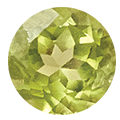
August birthstone meaning
The vibrant green of peridot is believed to possess the power to release the past and dispel negative energies, allowing one to move forward with renewed optimism and purpose.
Peridot properties
Formed deep within the Earth's mantle and brought to the surface through volcanic eruptions, peridot is a unique gemstone. While most peridot is created in a lab, unlike most other gems that come in a variety of colors, peridot is found exclusively in a range of green hues. With a Mohs hardness rating of 6.5 to 7, peridot is durable and can withstand the test of time.
Shop august birthstones: peridot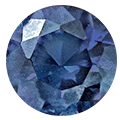
September birthstone meaning
Sapphires are often used in non-traditional engagement rings and wedding bands. The lore surrounding sapphires runs deep through all cultures, with many associating the gemstones with joy and fulfillment. Blue sapphire in particular is the most popular choice for September birthdays. From the ancient Greeks and Romans to the present-day British monarchy, blue sapphires have symbolized royalty and divine power for centuries.
Sapphire properties
Sapphires were once the unrivaled choice for engagement rings before diamonds took center stage. Renowned for their exceptional durability, sapphires boast a Mohs hardness rating of 9, ensuring a lifetime of radiant beauty and resistance to scratches.
Shop september birthstones: sapphire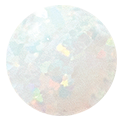
October birthstone meaning
The iridescent opal gemstone has adorned jewelry for centuries. Once revered by certain cultures as auspicious talismans, opals are now primarily associated with good fortune. For those born in October, tourmaline offers an alternative birthstone.
Opal properties
Opal is most often a white or green stone, but can also come in red or even black, which is the rarest opal. Most opals have a multi-color attribute that diffracts white light, giving them a particularly dazzling, almost ethereal effect when worn. Ranking 5.5 to 6 on the Mohs Scale, opals aren't as hard as other gems. Though they require a little more love and care, this birthstone's beauty is well worth the TLC.
Shop october birthstones: opal & tourmaline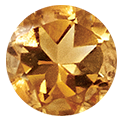
November birthstone meaning
Citrine is a vibrant gemstone with a history in jewelry dating back to at least 300 B.C. Believed to ward off negativity and pave the way for success, this radiant citrine complements a wide range of metal styles, owing to its yellow-orange tone. While citrine is the traditional birthstone for November, yellow topaz offers a lovely alternative.
Citrine properties
Citrine is a vibrant, golden-yellow quartz, its name derived from the French word for lemon. With a Mohs hardness of 7, citrine boasts a durability suitable for any type of jewelry, making it a versatile and enduring choice.
Shop november birthstones: citrine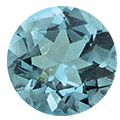
December birthstone meaning
Available in a spectrum of enchanting blues, topaz is believed to induce a sense of tranquility and peace. While traditionally associated with December, tanzanite offers a captivating alternative for those born in this month.
Blue topaz properties
Although it is generally blue, topaz can also be yellow or colorless. It is one of the hardest naturally occurring minerals, making it ideal for everyday wear in jewelry pieces. Topaz ranks an 8 on the Mohs Scale, making it harder than quartz but not as hard as sapphire and ruby.
Shop december birthstones: blue topaz & tanzaniteBirthstone jewelry is uniquely meaningful and crafted to symbolize luck, love, and personal significance
schedule an appointment
Schedule an appointment online or in person to discuss more about moissanite stones and see Helzberg's selection of moissanite rings and jewelry today!
Schedule nowmore advice

engagement buying guide
Finding the perfect engagement ring can be overwhelming, but it doesn't
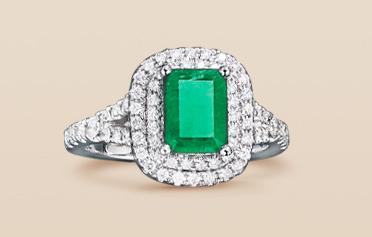
alternative engagement rings
From morganite to sapphire, there’s a gemstone out there for everyone.
Learn more
















